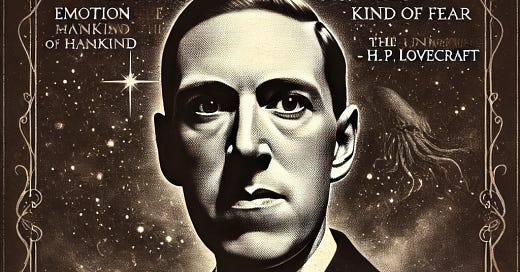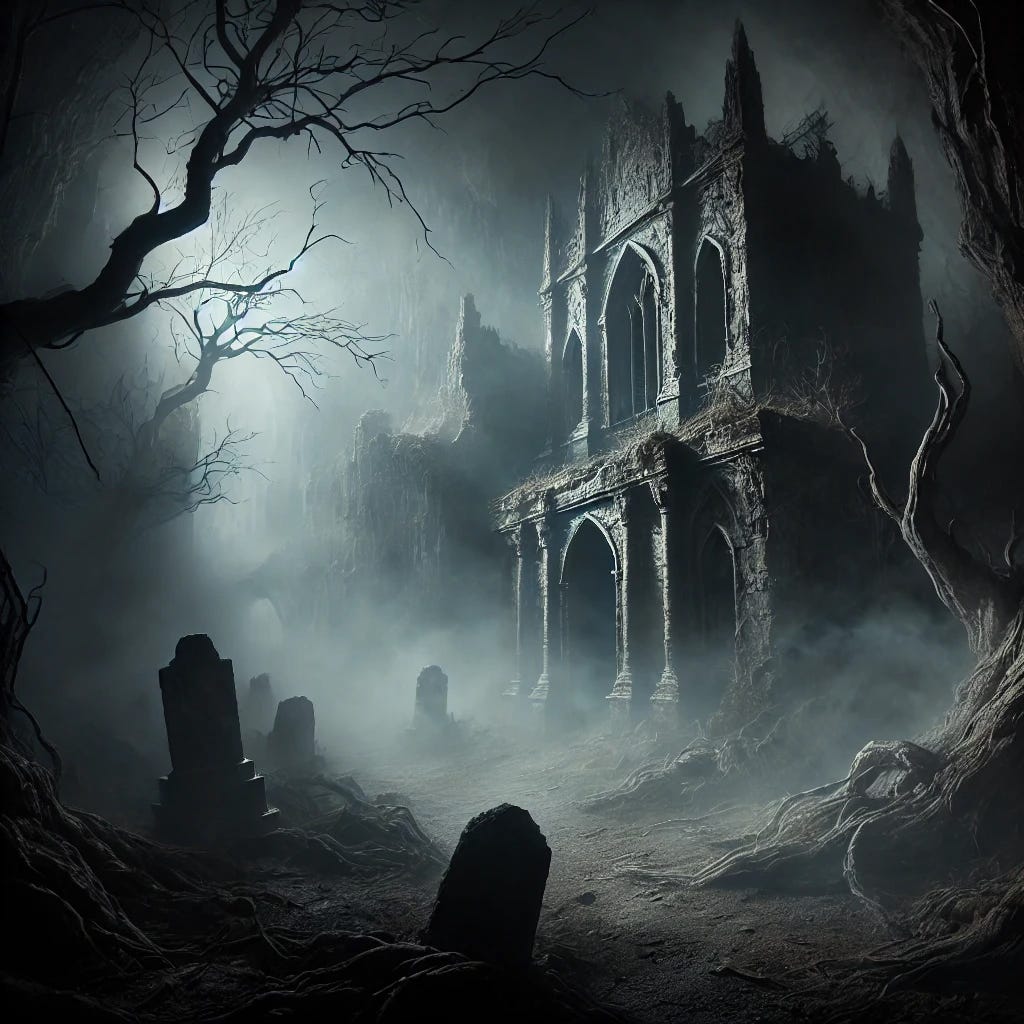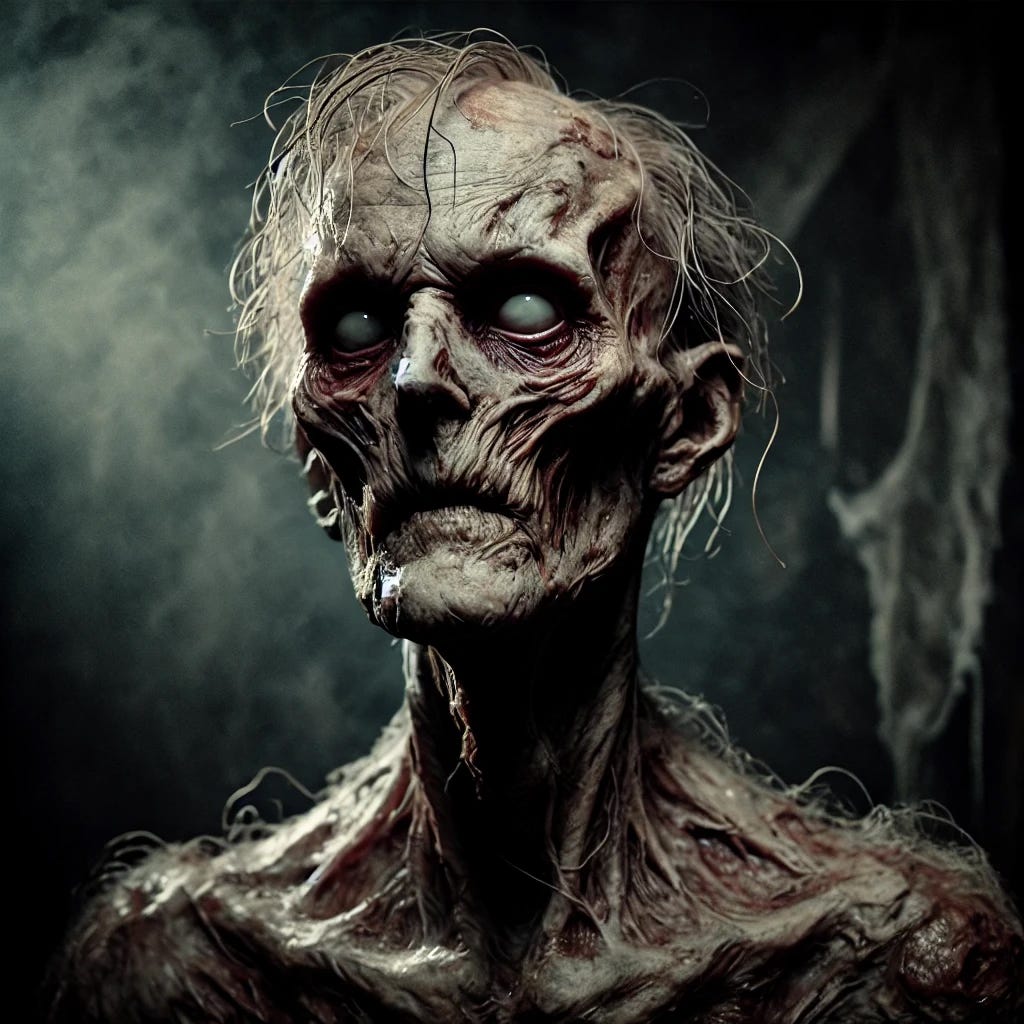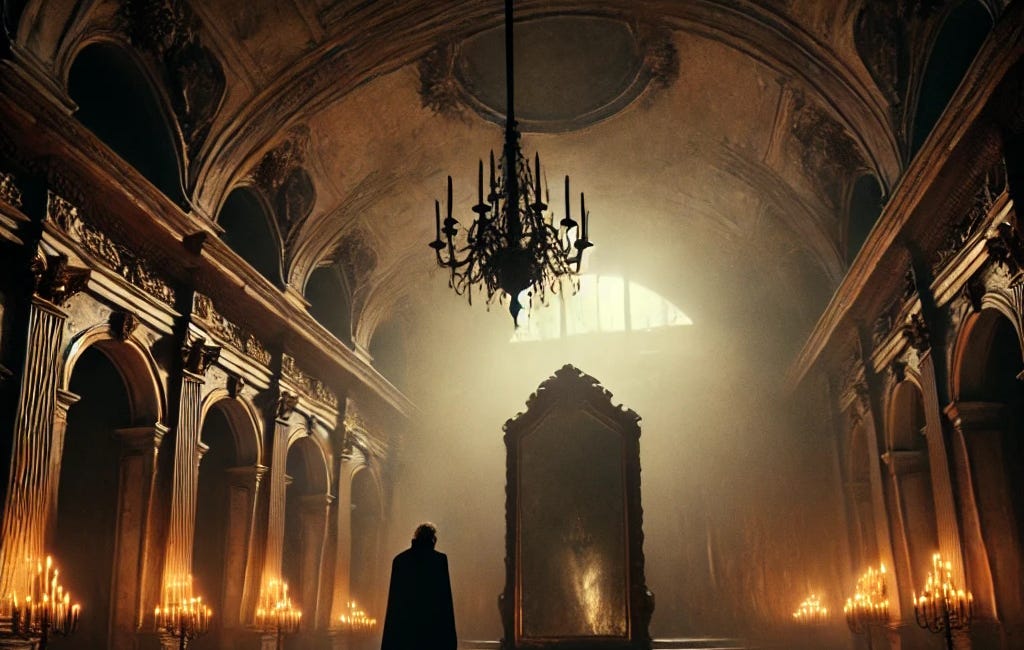H.P. Lovecraft’s "The Outsider"
In celebration of Lovecraft's birthday week, let's explore how my favorite of his stories is a pinnacle of the American Gothic
When we think of the Gothic, images of abandoned houses, ghosts, graveyards, and decay might come to mind. Or maybe we picture outsiders with black eyeshadow and chokers from Hot Topic. Either works.
American Gothic is an uncanny mirror held up to the American dream, where the idyllic promises of the New World are twisted into nightmares. This literary genre delves into horror, decay, and the grotesque, often exposing the anxieties of national identity, the wilderness, and the contradictions inherent in the American dream.
Enter The Outsider, Lovecraft’s masterpiece that pulls us into the murky depths of the American Gothic tradition. In this story, Lovecraft masterfully tackles themes of alienation, the supernatural, and a haunted past, weaving them into a narrative that is as moving as it is unnerving. Let’s explore why The Outsider deserves a prime spot in the pantheon of American Gothic tales.
Alienation: The Loneliest Castle in the World
Our story begins with a narrator who doesn’t know where he’s from or who he is. He’s never seen another living soul, or a mirror for that matter. His home is described as "infinitely old and infinitely horrible, full of dark passages and having high ceilings where the eye could find only cobwebs and shadows." Sounds like a perfect place to grow up, a happy childhood in the rot. He has no memory of ever seeing light or the outside world.
This setting isn’t just any old Gothic castle—this is Lovecraft’s universe, where even the architecture feels isolated and forsaken. The outsider’s alienation is palpable, and as we journey with him through the dark corridors of his home, we begin to understand that this is not just a physical isolation, but a profound existential one. Lovecraft taps into the Gothic tradition of the “outsider,” but here, the outsider isn’t just rejected by society—he’s rejected by reality itself.
Unmasking the Ultimate Horror
Lovecraft doesn’t stop at alienation; he cranks up the eeriness by throwing in a generous dose of the supernatural. After crawling his way to the surface—driven by an instinct for light and freedom—our lonely protagonist finally escapes his castle (or crypt!) and emerges in what appears to be a “brilliant world of light and splendor.” Things might be looking up, right? Not so fast.
This newfound world is uncannily off. The outsider stumbles upon a beautiful gathering, where elegantly dressed people are cast under the light he has always dreamed of finally seeing. But as he approaches, the world shifts: the people scream in horror and flee from him. He doesn’t understand why they are terrified until at last he rushed out of the room and into the open air and encounters his reflection in the glass…
"I stepped unsteadily out into the open light, and I looked at the pavement around me and in the glass of the window. I saw the ghastly reflection of the most hideous creature imaginable; I realized then that it was my own reflection, my own dreadful form."
A monstrous figure, his self bared before him…
This moment plays with the Gothic trope of the indescribable horror and the uncanny, where the true terror lies in the horrifying realization of one’s own monstrous identity. We feel it in our bones—something is terribly wrong here, and now, the protagonist knows exactly what it is.
Why it Matters?
Lovecraft doesn’t disappoint. Our protagonist, having ascended into this new world, discovers that the terror isn’t out there, but within. When he finally sees himself for what he truly is, the horror is unveiled: "I beheld in full, frightful vividness the inconceivable, indescribable, and unmentionable monstrosity which had by its appearance silenced an assemblage."
This moment is the crux of the story. Lovecraft flips the Gothic narrative—here, the monster is not some external force, but the protagonist himself. The past he’s been running from, the truth he’s been unable to face, is that he is the very thing he feared. “I know always that I am an outsider; a stranger in this century and among those who are still men.” This chilling revelation places The Outsider firmly within the American Gothic tradition, where the past’s horrors are not just buried in the ground, but etched into the very fabric of one’s being.
As you ponder this unsettling thought, remember that The Outsider isn’t just a tale of horror—it’s a mirror held up to the darkest corners of the human soul. And in true Gothic fashion, what we see there is often more terrifying than anything that lurks in the shadows.
So, next time you feel like an outsider, just remember: in the world of H.P. Lovecraft, that might be the most human thing of all.
Link to the full story of “The Outsider” by H.P Lovecraft







Very interesting write up. Thanks for posting the story too!